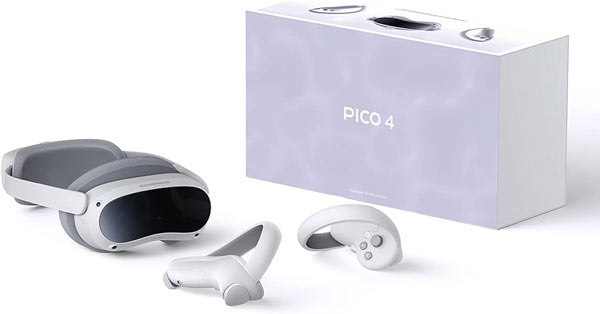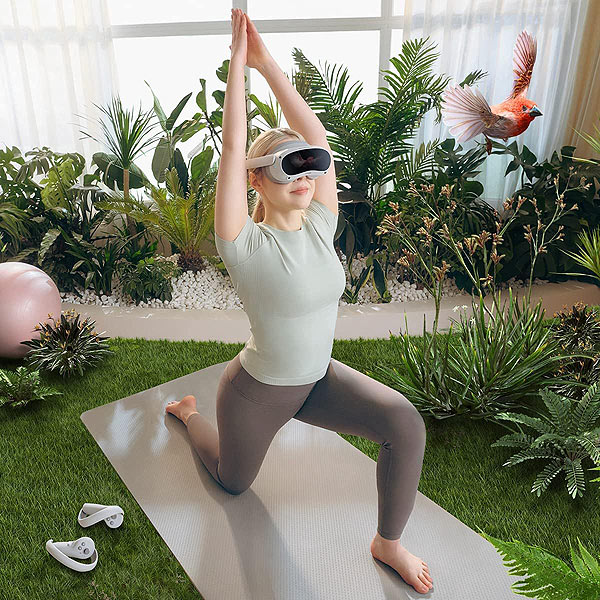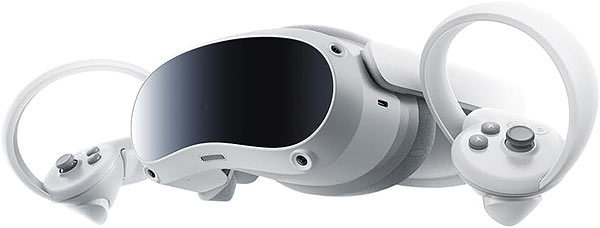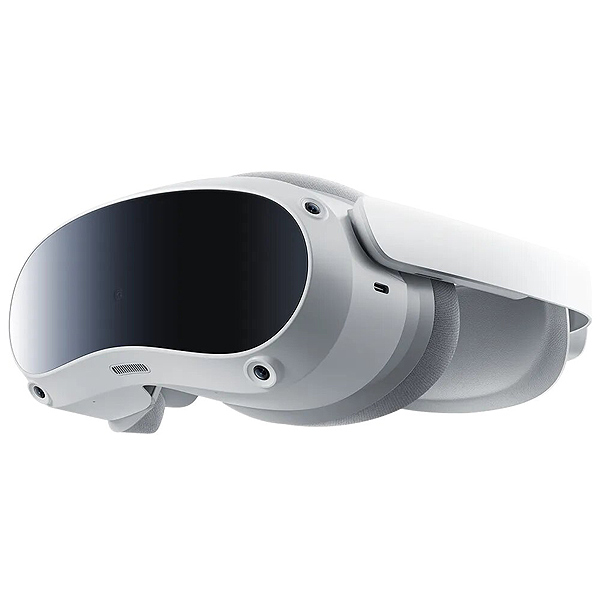The Pico 4 VR headset has been making waves in the virtual reality world since its release. As an avid VR enthusiast, I’ve had the opportunity to thoroughly test this device and explore its capabilities. In this comprehensive review, we’ll dive deep into the Pico 4’s features, performance, and overall value proposition. Let’s embark on this immersive journey and discover what makes the Pico 4 a compelling choice for VR aficionados.
Table of Contents
Design and comfort : A sleek and user-friendly experience
The Pico 4’s design is a testament to modern VR engineering. Its streamlined profile and lightweight construction make it a joy to wear, even during extended gaming sessions. At just 295g, it’s noticeably lighter than many of its competitors, including the popular Meta Quest 2.
One of the standout features of the Pico 4 is its pancake lens technology. This innovative approach to lens design allows for a more compact form factor while delivering exceptional visual clarity. The result is a headset that feels less cumbersome and more balanced on your face.

Comfort is further enhanced by the Pico 4’s adjustable head strap and cushioned face gasket. The motorized IPD (interpupillary distance) adjustment is a particularly nice touch, allowing users to fine-tune the lens positioning without removing the headset. This feature alone sets it apart from many other VR devices in its price range.
During my testing, I found the Pico 4 to be comfortable for sessions lasting up to two hours. The balanced weight distribution and ample padding helped prevent the fatigue often associated with front-heavy headsets. However, users with larger frames might find the top strap a bit basic, and some may experience slight pressure on their cheeks due to the gasket shape.
The Pico 4’s design prioritizes user comfort without compromising on performance, making it a standout choice for VR enthusiasts who value both style and substance.
Performance and display quality of the Pico 4
When it comes to visual fidelity, the Pico 4 truly shines. Its 4320 x 2160 resolution (2160p per eye) delivers crisp, detailed images that bring virtual worlds to life. The pancake lenses not only contribute to the headset’s compact design but also provide a clearer viewing experience with reduced chromatic aberration and ghosting compared to traditional fresnel lenses.

Powered by the Qualcomm Snapdragon XR2 processor, the Pico 4 offers smooth performance across a wide range of VR applications and games. The device supports refresh rates of up to 90Hz, ensuring fluid motion and reducing the risk of motion sickness.
One area where the Pico 4 particularly excels is in its color passthrough capability. Unlike some competitors that offer only grayscale passthrough, the Pico 4 provides a full-color view of your surroundings without significant depth perception issues. This feature enhances the mixed reality experience and adds a layer of convenience for users who need to interact with their physical environment without removing the headset.

In terms of tracking, the Pico 4 utilizes a 6 DoF (degrees of freedom) inside-out tracking system. During my tests, I found the tracking to be accurate and responsive, even in fast-paced games. The absence of external base stations simplifies setup and increases portability, making the Pico 4 an excellent choice for users who value convenience.
Here’s a quick comparison of key specs between the Pico 4 and its main competitor :
| Feature | Pico 4 | Meta Quest 2 |
|---|---|---|
| Resolution (per eye) | 2160p | 1832 x 1920 |
| Refresh Rate | 90Hz | 90Hz (120Hz experimental) |
| Weight | 295g | 503g |
| Passthrough | Full Color | Grayscale |
Software ecosystem and compatibility
The Pico 4’s software ecosystem is rapidly expanding, thanks to its recent acquisition of full OpenXR compatibility. This development has significantly increased the headset’s access to games and applications, narrowing the gap with more established platforms.
Integration with Steam VR is seamless, allowing users to easily access their existing library of PC VR titles. The Pico Link software facilitates both wired and wireless connections to your PC, offering flexibility in how you choose to play. However, it’s worth noting that wireless streaming of graphically intensive games can sometimes lead to performance issues, as I experienced during a session of Half-Life : Alyx.

The standalone VR library for the Pico 4 is growing, with a diverse selection of titles available directly through the device. While it may not yet match the extensive catalog of the Meta Quest 2, the quality and variety of available content are impressive and continually improving.
One potential drawback for some users is the limited availability of the Pico 4 in certain regions, particularly the United States. This restriction may impact the device’s overall market penetration and ecosystem growth in the long term.
Pico 4 video review
Value proposition and final thoughts
The Pico 4 presents an exceptional value proposition for VR enthusiasts, especially those in regions where it’s readily available. Priced competitively against its main rival, the Meta Quest 2, the Pico 4 offers superior specifications in several key areas, including resolution, weight, and passthrough capabilities.

During my time with the Pico 4, I’ve been consistently impressed by its performance and user-friendly features. The ease of setup, comfortable design, and impressive visual fidelity make it a joy to use for both VR veterans and newcomers alike.
However, it’s important to consider the device’s limitations. The restricted availability in some markets may impact long-term support and content development. Additionally, while the wireless streaming capabilities are generally good, they can struggle with more demanding titles.
The Pico 4 represents a significant step forward in accessible, high-quality VR experiences, offering a compelling alternative to more established brands in the market.
As someone who has been immersed in the VR space for years, I can confidently say that the Pico 4 is pushing the boundaries of what we can expect from an entry-level VR headset. Its combination of advanced features, comfortable design, and competitive pricing make it a strong contender in the current VR landscape.
We appreciate :
- High-resolution display with pancake lenses
- Lightweight and comfortable design
- Full-color passthrough capability
- Competitive pricing
- Accurate inside-out tracking
- Easy IPD adjustment
- Growing software ecosystem
We don’t like :
- Limited availability in some regions
- Occasional wireless streaming issues
- Basic top head strap
- Potential pressure on cheeks for some users
- Smaller content library compared to some competitors
In conclusion, the Pico 4 is a remarkable addition to the VR market, offering a blend of performance, comfort, and value that’s hard to ignore. While it may not be perfect, it certainly raises the bar for what we can expect from entry-level VR headsets. Whether you’re a seasoned VR enthusiast or a curious newcomer, the Pico 4 deserves serious consideration as your next virtual reality gateway.
